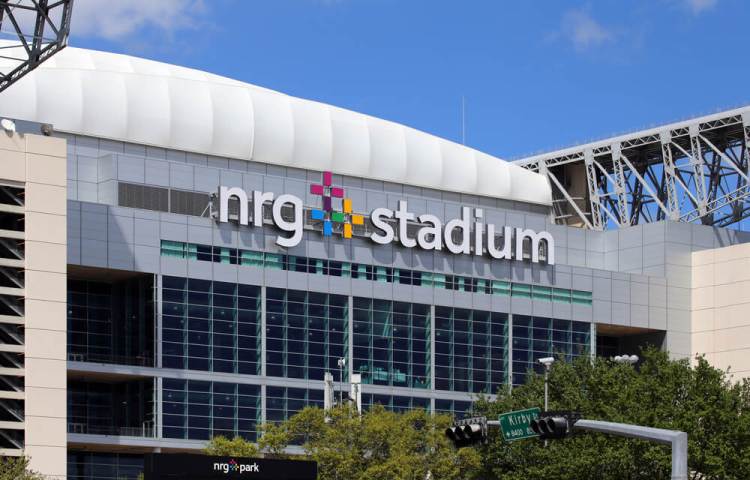Presented by Extreme Networks
Digital transformation is happening everywhere and today’s mobile consumer has increasingly heightened expectations about how technology should support his or her needs. For the NFL, the popularity of the latest big screen, 4K and curved TVs, fantasy football apps, social networks, and other technology has accelerated our need to transform stadiums into a truly connected experience.
This experience entails providing fans with the unique ability to be completely immersed in the game at an NFL stadium, watching the action unfold in front of their eyes while being surrounded by cheering fans. However, this also means providing fans with the comforts and conveniences available to them while watching a game at home.
Like other businesses that have adjusted to meet changing consumer demands, the NFL has embraced Wi-Fi in stadiums to guarantee that fans are connected while enjoying a game live. In 2013, we implemented a W-Fi and cellular connection standard, motivating our teams to deploy sufficient connectivity that would deliver some of these amenities, such as streaming NFL RedZone or posting on Facebook, while enhancing every aspect of the experience a game has to offer at a venue.
Bringing Wi-Fi to the stadium
While each NFL stadium is built differently, they all have two design challenges in common when it comes to deploying Wi-Fi: they are constructed mostly out of concrete and filled with thousands of people (who are made up of about 70 percent water) — two materials that pose significant challenges to Wi-Fi signal strength.
With these factors in mind, we needed to determine the best way to provide optimal connectivity in stadiums. By partnering with cellular carriers for DAS system coverage and with network vendors like Extreme Networks for Wi-Fi connectivity, we were able to fine tune and adjust stadiums in order to deliver a strong and reliable signal that could cut through dense stadium layouts.
Beyond simple connectivity, Wi-Fi deployments support critical operational functions central to a smooth and secure game day. Properly running the “business” of game day includes powering a number of devices: wireless scanners to read mobile tickets, point-of-sale devices to seamlessly help fans purchase concessions or team gear, and security cameras that feed data into centralized command centers to ensure all fans are safe during the game.
Wi-Fi can also provide a host of analytics to help clubs understand everything from online fan activity to in-stadium purchasing behavior. Teams can identify certain traffic patterns, such as if fans are more likely to use Snapchat during kickoff or stream live content during halftime. This helps prioritize advertising spend as well as Wi-Fi bandwidth in-stadium. The NFL has since helped its 32 clubs monetize their Wi-Fi investments while providing high-density Wi-Fi for every single fan during each game.
The fan experience, then and now
With new apps launching every day, the Wi-Fi standard has helped NFL clubs keep up with the demands of today’s consumers. Fans who once couldn’t properly download a webpage in-stadium, now can stream 288 gigabytes of content and send a snap without interruption, while tens of thousands of other fans are simultaneously doing the same on their smartphones.
Looking at mobile engagement patterns of fans using the free in-stadium Wi-Fi network during the past three Super Bowls, we’ve seen Facebook dominate as the top social media platform used based on bandwidth. However, we’ve also seen new apps, such as Snapchat, emerge and compete for bandwidth.
Overall, the League is experiencing peak averages of 50 percent of stadium capacity connecting to the Wi-Fi network during a game and 4TB of data per game.
What to expect from game day in the future
As consumer expectations continue to rise, we’re just scratching the surface of how Wi-Fi and technology can deliver the ultimate game day experience.
For instance, the release of 802.11ac Wave 2 technology has enabled higher bandwidth utilization and will continue to improve the fan’s mobile experience. The adoption of Wi-Fi analytics can help stadiums and other enterprises learn more about consumer buying habits and what makes them tick. Is it convenience, experience, or the thrill of using new technology? Perhaps all three.
No matter what fans are using their smartphones for, managing the network is an ongoing task to ensure Wi-Fi is performing at the best of its ability. As we continue to evolve the game day experience for players, coaches, and fans across the NFL, its game on for connectivity — all the time.
Michelle McKenna-Doyle is SVP, CIO at The National Football League.
Norman Rice is EVP of Global Marketing, Supply Chain & Corporate Development at Extreme Networks.
Sponsored posts are content produced by a company that is either paying for the post or has a business relationship with VentureBeat, and they’re always clearly marked. Content produced by our editorial team is never influenced by advertisers or sponsors in any way. For more information, contact sales@venturebeat.com.

